A graphic designer seeks to revive an old tea-drinking ritual, Yang Feiyue reports.
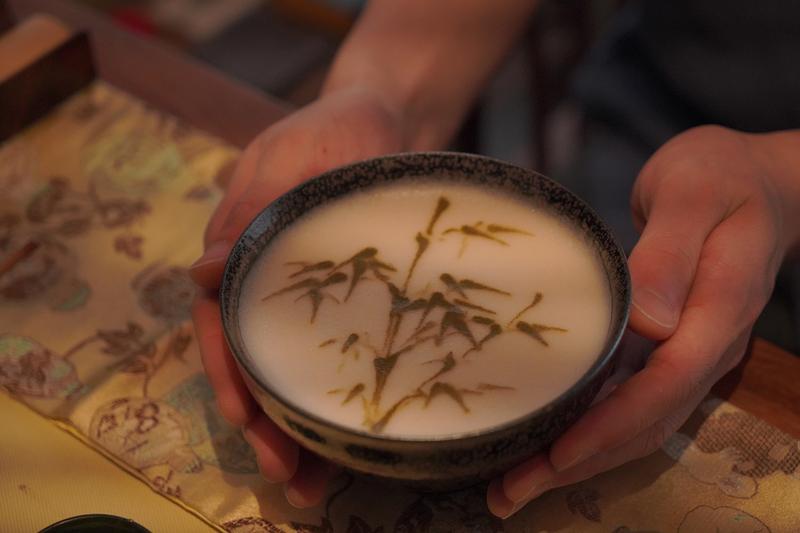 In Han Zheming's skilled hands, the image of a bamboo appears on a cup of tea. (PHOTO PROVIDED TO CHINA DAILY)
In Han Zheming's skilled hands, the image of a bamboo appears on a cup of tea. (PHOTO PROVIDED TO CHINA DAILY)
It's common to see a barista create coffee art, but it's a whole different ballgame doing same thing with tea. Han Zheming has managed to perfect the skill, creating tea art in cups, or dian cha in Chinese, which used to be a ritual during the Song Dynasty (960-1279).
Over the past six years, the 40-year-old Shanghai resident has used tea and spoons to create nearly 200 patterns based on ancient paintings.
"It's like adding bells and whistles to tea and giving people a stronger sense of occasion, so drinking tea is more fun," Han says.
It's also his intention to bring the old ritual back to modern life and have more people appreciate its charm. Dian cha in modern brewing enhances the taste of tea, Han says. "It is similar to the foam on top of a cup of coffee, except that it is made of tea rather than milk."
Chinese tea culture started to enjoy popularity during the Tang Dynasty (618-907) and flourished throughout the Song Dynasty, when tea had become a necessity for almost everyone, from nobles and scholars to common people, just like other indispensable items, such as rice, oil and salt, as suggested by Song politician and thinker Wang Anshi.
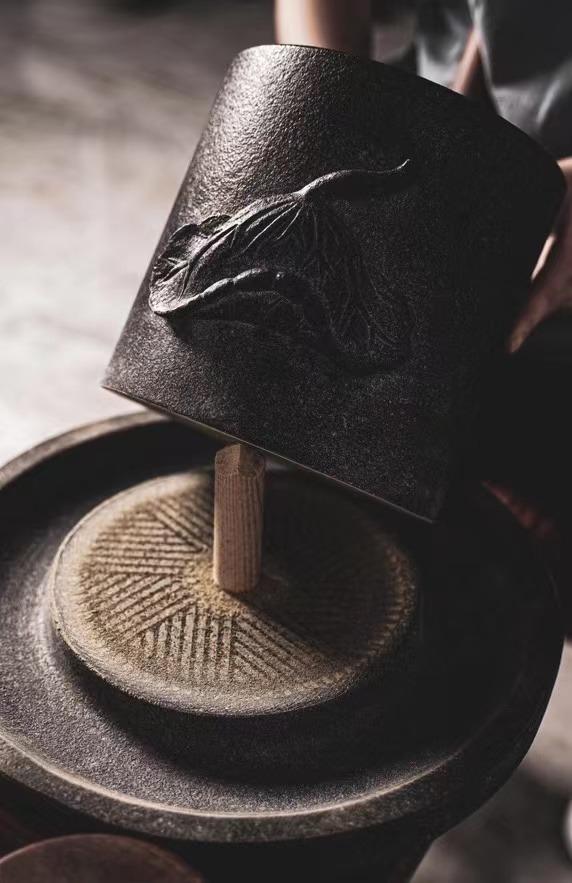 Preparation for the traditional ritual of dian cha involves several steps-tea leaves are ground to powder; mixed with hot water, the tea powder is whisked until froth appears. (PHOTO PROVIDED TO CHINA DAILY)
Preparation for the traditional ritual of dian cha involves several steps-tea leaves are ground to powder; mixed with hot water, the tea powder is whisked until froth appears. (PHOTO PROVIDED TO CHINA DAILY)
Different from the method of brewing tea during the Tang period, in the Song Dynasty, the prevalent way of having tea was through dian cha. The process begins with hot water being poured over fine powdered tea creating a paste, then more hot water is slowly added as the tea is constantly whisked by hand with a bamboo stick. It is believed that this method later spread to other parts of East Asia, including Japan, where similarities can be seen in the way matcha is prepared today.
This action of pouring hot water is called dian, hence the name dian cha, which was listed as an intangible cultural heritage of Runzhou district, Zhenjiang city, Jiangsu province, in 2019.
"It is sort of like how you mix baby formula with water," Han says about tea-whisking, adding that the key is to practice coordination between the wrist and the arm. "It usually requires whisking the mixture between 180 and 200 times before the water and the tea are fully blended and the froth appears."
Then, one can take the liberty of making artistic designs in the froth with the concocted tea paste.
Han has been fascinated by the culture and art of the Song Dynasty, and has engaged in its artistic practices since childhood.
"My mother loves traditional culture and I have been leaning toward it under her influence," Han says.
In 2002, Han was admitted to the China Academy of Art in Hangzhou, Zhejiang province, and spent four years learning design.
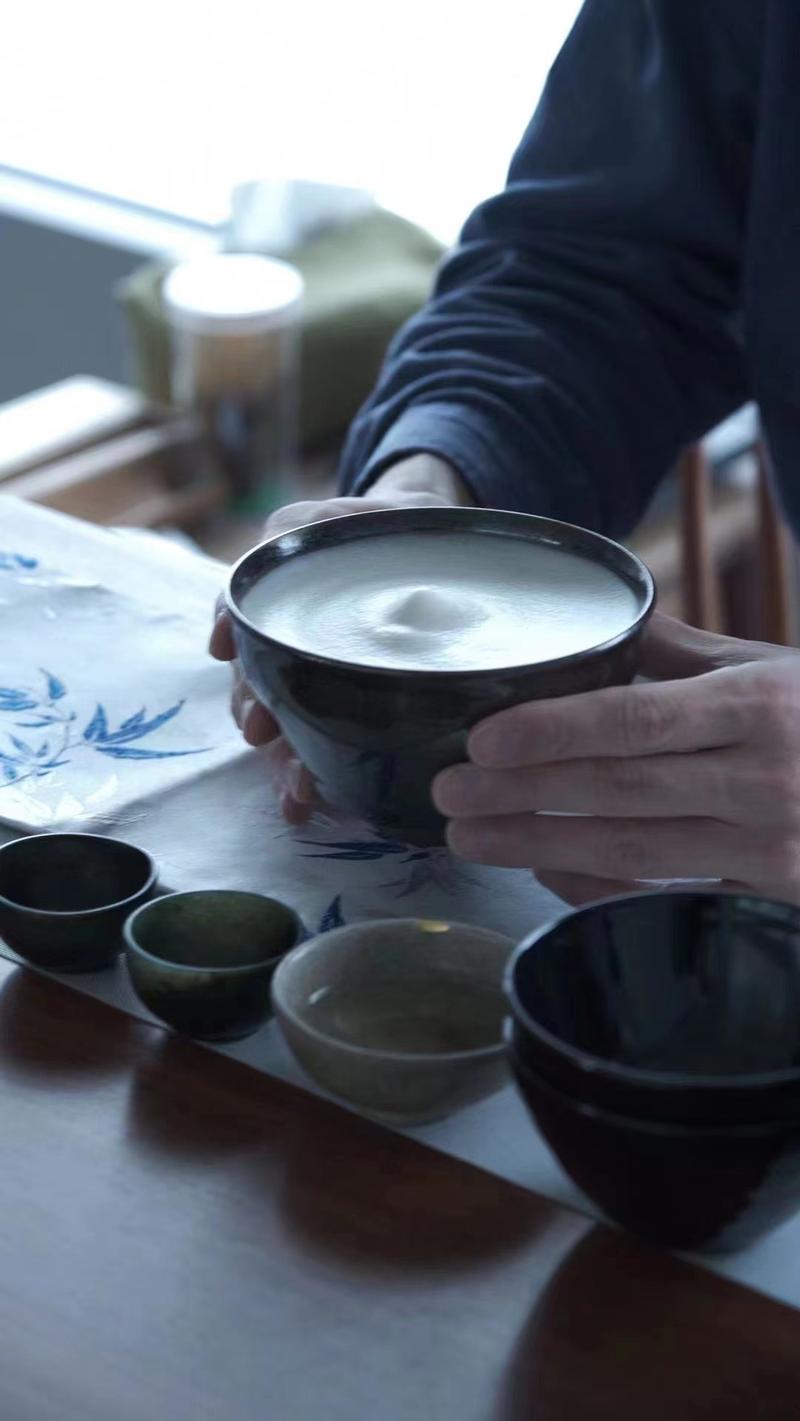 Preparation for the traditional ritual of dian cha involves several steps-tea leaves are ground to powder; mixed with hot water, the tea powder is whisked until froth appears. (PHOTO PROVIDED TO CHINA DAILY)
Preparation for the traditional ritual of dian cha involves several steps-tea leaves are ground to powder; mixed with hot water, the tea powder is whisked until froth appears. (PHOTO PROVIDED TO CHINA DAILY)
After graduating in 2006, he worked as a graphic designer for a games company in Shanghai, and took great delight in drinking tea. This led him to learning about traditional tea culture and buying ceramic tea sets, especially those made in the style of the Song Dynasty. During the process, he also met people with the same interest.
"We exchanged notes and compared our collections," Han says.
While studying history journals trying to figure out the reasons behind the use of tea sets, he stumbled upon the art of tea-whisking.
"I was amazed by this exquisite way of drinking tea, which was also loved by Emperor Huizong of the Song Dynasty," Han says.
The emperor's book, Treatise on Tea, exposed Han to the details of tea-whisking. In the eyes of people of that time, good tea should be white and fine, Han explains. The better the tea, the whiter it should be, and the longer the froth should last.
Han experimented with several kinds of tea, such as green and black, eventually settling on using white tea.
"It's fermented longer on the surface level and is relatively sweet, and the bubbles are white and fine," he says. "It's the tea that's closest to the description of dian cha of the Song Dynasty."
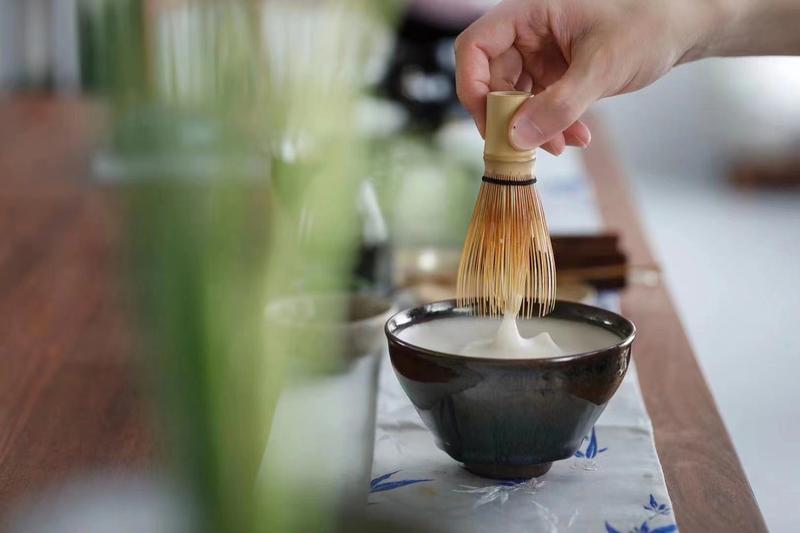 Preparation for the traditional ritual of dian cha involves several steps-tea leaves are ground to powder; mixed with hot water, the tea powder is whisked until froth appears. (PHOTO PROVIDED TO CHINA DAILY)
Preparation for the traditional ritual of dian cha involves several steps-tea leaves are ground to powder; mixed with hot water, the tea powder is whisked until froth appears. (PHOTO PROVIDED TO CHINA DAILY)
Han was curious about the patterns created on the tea foam, as recounted in ancient documents, and began his attempt at reviving the art form with the understanding that the froth resembles paper, while the tea paste is like ink. Despite a background in classical painting, applying the theory in practice proved to be quite different to how he had imagined.
"When it comes to traditional painting, it is about the soft brush against the hard paper, but with the tea, it is the other way round," Han says. "It's the hard teaspoon against the soft froth."
Some of his classical painting skills can be applied to tea, but require a degree of modification.
Han says he often goes to museums to observe Song paintings. "It has to be cautious work, but quick, before the froth dissipates."
Usually, the whole process has to be completed within 10 minutes. The ideal state is when the tea temperature is around 40 C, ready for the palate. It was through trial and error that Han got going. "Usually, it takes a year of practice for one to fully grasp tea-whisking."
Now, he can deliver a piece of tea-whisking art in "one take", including reproducing the well-known Eyes Embroidered with Plum Blossoms by Huizong.
However, the pattern on tea froth will only last for up to an hour.
"It's an evanescent art," says Han, adding that he takes photos of his work as a way of extending its life.
With his increasing input to the art, Han quit his job at the games company in 2019 and has been spreading dian cha culture ever since. He put the process of tea-whisking and drawing on social media platforms, including Little Red Book, Bilibili and Douyin. He has more than 20,000 followers on Little Red Book, and some of his videos have received more than 300,000 views.
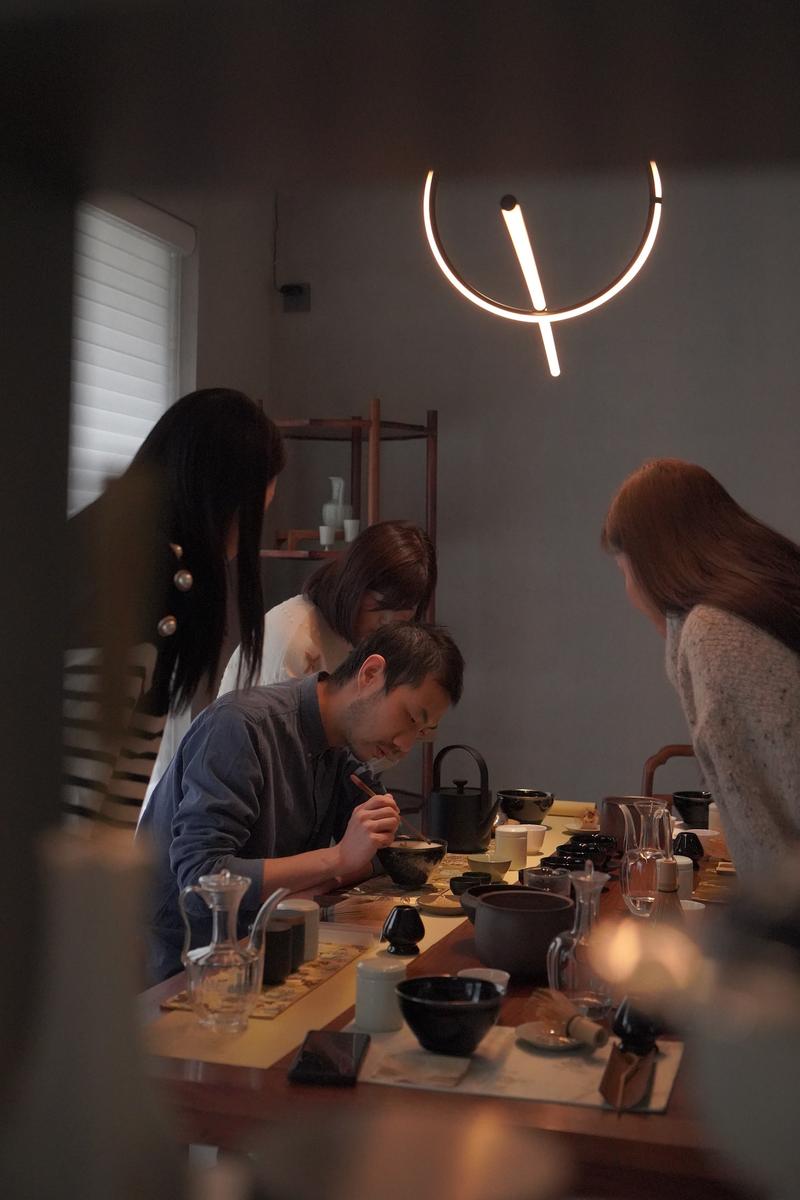 Han Zheming demonstrates the technique of dian cha for his students. (PHOTO PROVIDED TO CHINA DAILY)
Han Zheming demonstrates the technique of dian cha for his students. (PHOTO PROVIDED TO CHINA DAILY)
To date, more than 100 people have knocked on his door to learn the technique. "They are from all walks of life, but are mostly white-collar workers, and they are all interested in tea," Han says.
Chen Xinxing started to learn from Han in December 2020.
"I love tea, and when I saw the tea ritual in a TV drama, I got curious," the Shanghai resident says.
Chen met Han at a tea-tasting event. "The Song-style tea tastes magical, beyond description, nothing like I've had before," she says.
Chen immediately signed up for Han's class. So far, she can deliver a decent froth. "I felt it was more about opening a door to traditional culture," Chen says, adding that Han also tells the class about ceramics of the Song Dynasty.
Speaking about his understanding of this tea art, Han says it's "to increase aestheticism" rather than change the essence of tea.
"As well as the poems, calligraphy and paintings that were created back then, I want more people to understand the items used by people to drink tea, and the reasons behind the ways they prepared tea," he says.
Contact the writer at yangfeiyue@chinadaily.com.cn


